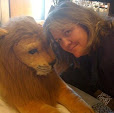Monday, January 14, 2013
The Solitary House
 Posted by
JaneGS
Posted by
JaneGS
I read a lot of historical fiction, and I read a lot of Victorian novels. In thinking about what to write about Lynn Shepherd's marvelous novel, The Solitary House, it struck me that it is actually more a modern Victorian novel than historical fiction. It reads like a Victorian novel, albeit one with a modern editor who didn't purge it of its grit and didn't try to put a pretty face on a sad story.
There's so much that I loved about The Solitary House. First, it is a joy to read--the language, the modern narrator who guides the reader through the story and points out the literary landmarks throughout the story, the two Charles Maddoxes (both heroes in their own way), the present tense, the structure of double narrator, the intelligent plotting and attention to detail, and the compassion and timeless themes of duty, honor, loyalty, and love that drive most great stories.
I really found intriguing how Shepherd was able to use Charles Dickens' Bleak House and Wilkie Collins' The Woman in White as a springboard to create another parallel story that intertwined with both, was able to stand on its own, and yet served as commentary on both as well. I don't think I'll ever be able to read one independent of the others again, and I think the stories in all three novels are enriched in that they reflect each other, in a fun-house mirror sort of way.
I think The Solitary House is one of the most interesting novels I've read, certainly in recent years, because of its relationship to the Dickens and Collins novels that provide its warp and weft. And this relationship also made it, despite the sordid tale it related and the grim world it depicted, a very satisfying read. I enjoyed thinking about what it meant to watch the story of Bleak House unfold again, but with a twist.
I'm really looking forward to reading Shepherd's latest novel, A Fatal Likeness (U.S. title--it's being released as A Treacherous Likeness in the U.K.), which promises to be a "mystery that explores the dark lives and unexplained secrets of the poet Percy Bysshe Shelley, and his wife Mary, author of Frankenstein."
Subscribe to:
Post Comments (Atom)
Interesting that an author would use Dickens characters in other stories. Based upon your commentary and what I have heard others say and write about these books it sounds as if Shepherd has done so intelligently and respectfully.
ReplyDeleteI actually have never read Bleak House so I would want to read that first before I took on a book like this.
Enjoying this book definitely doesn't depend on having read either Bleak House or The Woman in White first--but I think it changes the experience of reading it.
DeleteThis sounds fascinating. I'm adding it to my Wishlist.
ReplyDeleteI knew you would enjoy this one! I really liked the way the two stories were woven into this one without being super obvious about either one. If you have read them, you'll see all of the small references but if you haven't, you're not a complete outsider. I guess I'm just saying it was done in a really clever way that I enjoyed!
ReplyDeleteThis is going right onto my wishlist, it definitely looks like something I would love! Great review!
ReplyDelete